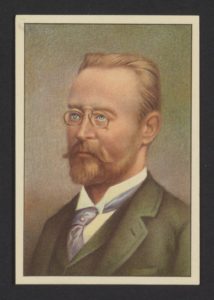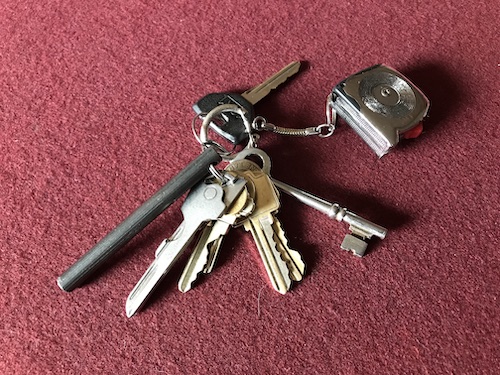If you want to start a fire, you can’t do better than using sparks that are nearly the temperature of the Sun’s surface. That’s what happens with a ferrocerium rod, aka ferro rod, aka bushcraft staple.
A ferro rod produces sparks as hot as 6,000-degrees Fahrenheit / 3,315-degree Celsius. Think about how mind-boggling hot that is! The surface of the sun is 10,000F. The surface temperature of Venus is around 900F. The temperature of the earth’s mantle ranges from 1,832F at the crust, to 6,600F at the edge of the core. When you run a metal striker down a ferro rod, the sparks you create are almost the hottest thing IN THE GALAXY. You’re a fucking god, take a bow. Science has made you Prometheus, manifesting the power of the sun from your fingertips.
Some more geocentric comparisons?
Spaceship re-entry generates 2,691 Fahrenheit degrees of heat.
Gold melts at 1,948F. Diamonds melt at 1,292F. Glass melts at 2,800F (loser, diamond!).
And as every conspiracy theorist learned from that inside job called “9/11” – steel melts at 2,500F.
* * *
Those insane brief flashes of extreme temps that occur in nature are amazing. The mantis shrimp and pistol shrimp can generate heat of 8,000F, even producing – briefly – plasma. It’s claimed that the collapsing cavitation bubbles generate heat up to 20,000K, which is 4x hotter than the sun’s surface.
Cavitation is rapidly emerging as a powerful energy source for basically every industrial process that uses heat. You should totally read this.
* * *
Ferrocerium may seem like some impressive new 21st Century engineering, but it was invented in 1903 by Austrian chemist Carl Auer von Welsbach. Most people commonly know it as the sparking “flint” in cigarette lighters. However, like the “lead” in pencils and the “jazz” in Paul Whiteman, King of Jazz – there ain’t none of that in there.
Actual flint is a natural mineral (quartz) while ferrocerium is a hella cool manmade alloy, the amalgamation of iron (ferro) and cerium. At least it was at its inception, because like everything else, even pure ferrocerium has given way to some modern refinements and cost-saving adulterants. Today, rather than the original formula of 30% iron + 70% cerium, most modern ferro rods are a blend of iron and cerium, along with some other volatile elements like magnesium, praseodymium, lanthanum, and neodymium (as in the superpower magnets). The commonality with all those is that they tarnish quite fast when exposed to oxygen, so when given an extra oomph, they do the sparky-sparky-hot thing (chemistry was not my best subject in school).
The other commonality with all those elements (excluding magnesium) is that Carl Auer von Welshbach is the man responsible for discovering/inventing/purifying them. They’re referred to as “rare earth elements” which makes people think they’re scarce, but that’s not what the phrase means. The “rare” part is that they aren’t found in large quantities of veins and deposits like other ore. In fact, the rare earth element cerium is the 25th most abundant mineral on the planet – even more common than copper. But it’s always mixed with other metals and needs to be extracted. Rare earth metals, meet Carl Auer von Welshbach.

Carl Auer von Welshbach, with his knack for both marketing and recognizing lucrative opportunities for new inventions, eponymously named ferrocerium “Auermetall.” The factory where he made ferrocerium – Treibacher Industrie AG – is still functioning, still making ferro rods and lighter flints, and still the major employer in Althofener, Austria (pop. 4,759). For whatever mystical and inscrutable reasons that places become Places – Althofener has remained a fertile spot where Earth meets human ingenuity, for basically all of recorded and unrecorded time, thanks to its local iron mines. Some of the earliest Neolithic flint axes ever found were uncovered at Althofener. Worth noting – Treibacher’s U.S. branch office is based quite logically in the iron-rich state of Minnesota (Minneapolis).
Maybe you go camping but don’t own a ferro rod. Maybe you light some newspaper with your 99-cent Bic-style Dollar Store lighter…. Or, maybe you never even leave your backyard, you just light some cigs and occasionally a Weber grill with your trusty Zippo. You’re still using ferrocerium. A tiny ferro rod. Auermetall.
(Wanna hear another amusing factual tidbit? The meaning of “Auer” is “someone living by a water meadow”…)
* * *
Interestingly, along with ferro rods, von Welshbach’s work led to another essential tool of 20th Century camping – the Coleman lantern mantle. He patented the gas mantle in 1884, which is a blend of 99% thorium dioxide and 1% cerium oxide impregnated on cotton or silk gauze. With their impressive brightness and efficiency, gas mantles were quickly adopted for municipal gaslights, but of course, Edison’s electric incandescent bulb (patented 1880) soon made gas lighting obsolete. Except in the woods where there are no utilities. It was in 1900 that the Coleman Company adapted them for the classic Coleman white gas lantern. In some ways, you could say that Carl Auer von Welshbach is the father of modern outdoors ignition and illumination. In fact, two outdated terms for what we now generically call “lantern mantles” are “Welsbach mantles” or “Auerlichts” (Auer Light), probably coined by Carl himself again.
I would suggest that von Welshbach is on par with Horace Kephart in forging the 20th century concept of recreational camping. Ferro rods, cigarette lighters and gas lanterns. The dark time at your campsite, post-sunset, could easily be called “Auernicht” (Carl would suggest it)… Although, like the start of the last century, here in the early 21st Century, old gas mantles are rapidly losing ground to super-efficient and bright LED’s, often charged by the sun itself.
It’s also worth noting that while the default fuel for Coleman lanterns has for decades been their refined petroleum product called “white gas,” that the lanterns were originally engineered to run on regular gasoline (and many people say they still can). The impetus for creating Coleman Camp Fuel was to avoid the additives in automobile gasoline. The first additive being lead of course, beginning in 1921, but even today with the lead out, there’s plenty of detergents and anti-corrosive agents added to gasoline. But at least most of them won’t lower your IQ like lead. And either way – Coleman fuel just smells better.
But, gosh, what an optimistically 20th Century idea – drive your Tin Lizzy up to the Catskills and fill your Coleman lantern and Coleman camp stove straight from the tank of the ol’ flivver…
As anyone who has read the (overly cautious, due to a class action lawsuit) warning on a pack of Coleman mantles knows – thorium dioxide is radioactive. But barely, so don’t freak out. The normal background radiation absorbed by the human body is 400x greater than using a white gas Coleman lantern in your tent every weekend for a year. You lucky sonuvabitch, must be nice.
* * *
I really have no idea why companies make those huge ferro rods, like 9-10” long with the handle. Well, no – I should say I understand why a company makes anything a person will buy, so the better question is – why do people buy giant ferro rods, especially when the usual camping goal is to limit size and weight? Is it a penis metaphor thing? On YouTube, you’ll see dudes who cut the handles off their toothbrushes also swinging a ferro rod the length of their forearm.
In fact, I don’t even understand putting a handle on a ferro rod either. If anything, a fixed handle encourages the user to wear out the rod more quickly and unevenly by always starting at the same spot and scraping in the same direction. If you hold the rod from a different end each time, it will wear more evenly.
The ferro rod I use is 3” long and comes in a 3-pack for only twelve bucks on Amazon. I keep one on my keychain, one in my emergency kit and give them away as gifts because they’re so cool and cheap. After five years of using it constantly, in the woods and my backyard fire pit, it’s nowhere near wearing out.

This one brags that it’s good for 20,000 strikes, which is just absurd. That’s the equivalent of striking the ferro rod 3 times per day, every day, for 18 years straight. This one called “The Grizzly” proclaims itself the biggest ferro rod in the world and costs $150, with a real antler handle. It’s 9” long and weighs over a POUND. This is giant, useless, Rambo survival knife territory. It’s like thread count for sheets or caffeine in energy drinks or fiber in breakfast cereal, just bigger and more for no practical reason… Don’t be a rod-tard.
You can use any kind of metal with an edge to spark a ferro rod. Back of your knife, axe, fork or spoon…. Many “deluxe” brands throw in a “free” striker, which is usually a three-inch piece of hacksaw blade. For my 3” keychain rod, I mostly use the serrated blade of my cheapo key-knife which works great. You should never strike a ferro rod with your actual knife blade for obvious reasons, but frankly, the key-knife blade is too small and awkward to use for cutting but I love it as a striker. Plus I always have the same Swiss Army knife that’s been in my pocket since age 13 so don’t really need another blade.
Only once has TSA noticed the ferro rod on my keyring and even then they didn’t know what it was. I got pulled to the side and the agent guy asked what it was, and literally before I could even answer, he lost interest and handed it back to me. I think because it looks more like some kind of Chinese martial arts weapon, or some kind of souvenir and mostly to keep the line moving he figured it was harmless. I’m pretty sure if I had explained it’s a firestarting tool that can spew 6,000-degree sparks that they would have confiscated it. I wasn’t even going to lie – let them confiscate it, it was only four bucks. Surprisingly, they’ve also never noticed the (mostly useless) key knife either.
And it’s important to note – the proper way to use a ferro rod is not to run your scraper down the side of the rod, but to hold the scraper stationary and pull the ferro rod up. It will let you aim the sparks with much more focus as well as produce a lot more sparks. And I think, in the long run, probably use up less ferrocerium. But yeah – at thousands of strikes, who cares?
# # #
